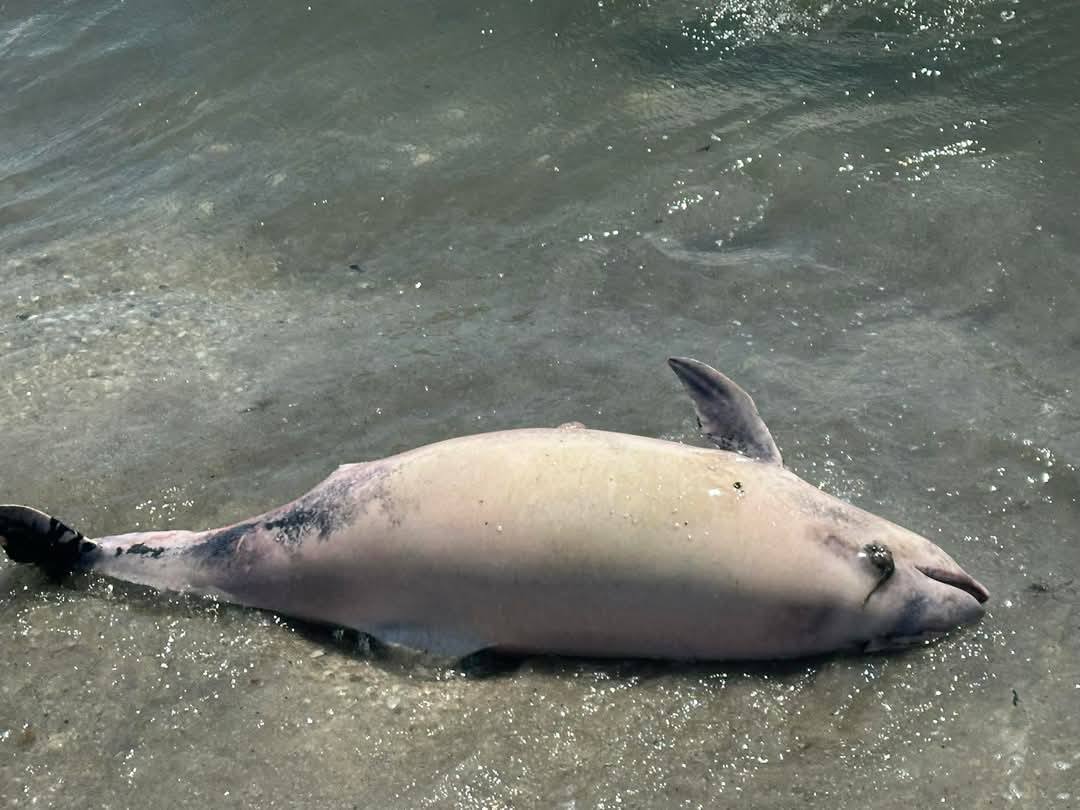The sea brings back the dead: for the first time in a year, a dead dolphin was found in Odesa region
5 June 17:49
On June 4, the first death of a dolphin in a year was recorded on the coast of the Tuzly Estuaries National Nature Park in Odesa region. This was reported by environmentalist Ivan Rusev on his Facebook page, "Komersant Ukrainian" reports.
According to Rusev, it is a white-sided dolphin, a species of dolphin that often dies as a result of military factors in the Black Sea.
“It’s been almost a year since the last dolphin death in the park. And yesterday, on the 33rd kilometer of the sandbar, we found the body of a dead bottlenose dolphin again. The fins are intact, but it is clear that the animal had been at sea for a long time, drifting to the shore,” the ecologist wrote.
The dolphin’s body was taken to the Tuzly Amazon border, where it will be examined as part of criminal proceedings under Article 441 of the Criminal Code of Ukraine – “Ecocide”.
On the same day, it became known that a dead small whale, an Azov, was found at the mouth of the Danube-Sulina River on the Romanian side.
Ivan Rusev suggests that both cases may be related either to fuel oil pollution near the Kerch Strait or to the effect of powerful hydroacoustic systems (sonars) used by Russian warships near Novorossiysk. Currents, in his opinion, could have carried the bodies to the western coast of the Black Sea.
The strandingof dead dolphins on the Black Sea coast is an alarming and multifactorial phenomenon that has intensified since the outbreak of full-scale war in Ukraine in 2022. Below is the basic information about it:
What is a mass dolphin stranding?
This is a situation where dead or weakened dolphins (mainly white-beaked, bottlenose and Azov) are thrown ashore. This is not normal and usually indicates serious environmental or man-made problems.
Possible causes of dolphin strandings:
- Russia’s military actions in the Black Sea:
Since the beginning of the full-scale war, the intensity of underwater and surface military activity has increased significantly (especially in the Crimea and Novorossiysk).
The use of sonar, sonar systems, and underwater explosions can disorient dolphins, cause damage to internal organs, or force them to “flee” to shallow waters where they die.
Marine pollution:
Fuel oil, fuels, heavy metals, and chemicals from damaged ships or shelled infrastructure end up in the sea.
As a result, animals develop infections, poisoning, or impaired ability to navigate.
Lack of food or changes in the food chain:
Changes in the ecosystem caused by war and climate change are affecting the populations of fish that dolphins eat.
Statistics and facts:
In 2022-2023, environmentalists reported thousands of dead dolphins on the coasts of Ukraine, Bulgaria, Romania, and Turkey.
According to the National Academy of Sciences of Ukraine and researchers from the Tuzly Estuaries, in some months the number of strandings increased tenfold.
Tissue samples showed lung damage, burns, dehydration, and signs of acoustic trauma.
Legal context:
In 2022, Ukraine opened criminal proceedings for the first time under Article 441 of the Criminal Code of Ukraine – “Ecocide” – related to the mass death of marine mammals due to the actions of the Russian Federation in the Black Sea.
What is happening now?
New cases are recorded in 2024-2025. In June 2025, for example, a dead dolphin was found again on the coast of the Tuzly Estuaries National Park.
At the same time, similar cases have been reported in Romania (for example, a dead Azov Sea dolphin at the mouth of the Sulina).









